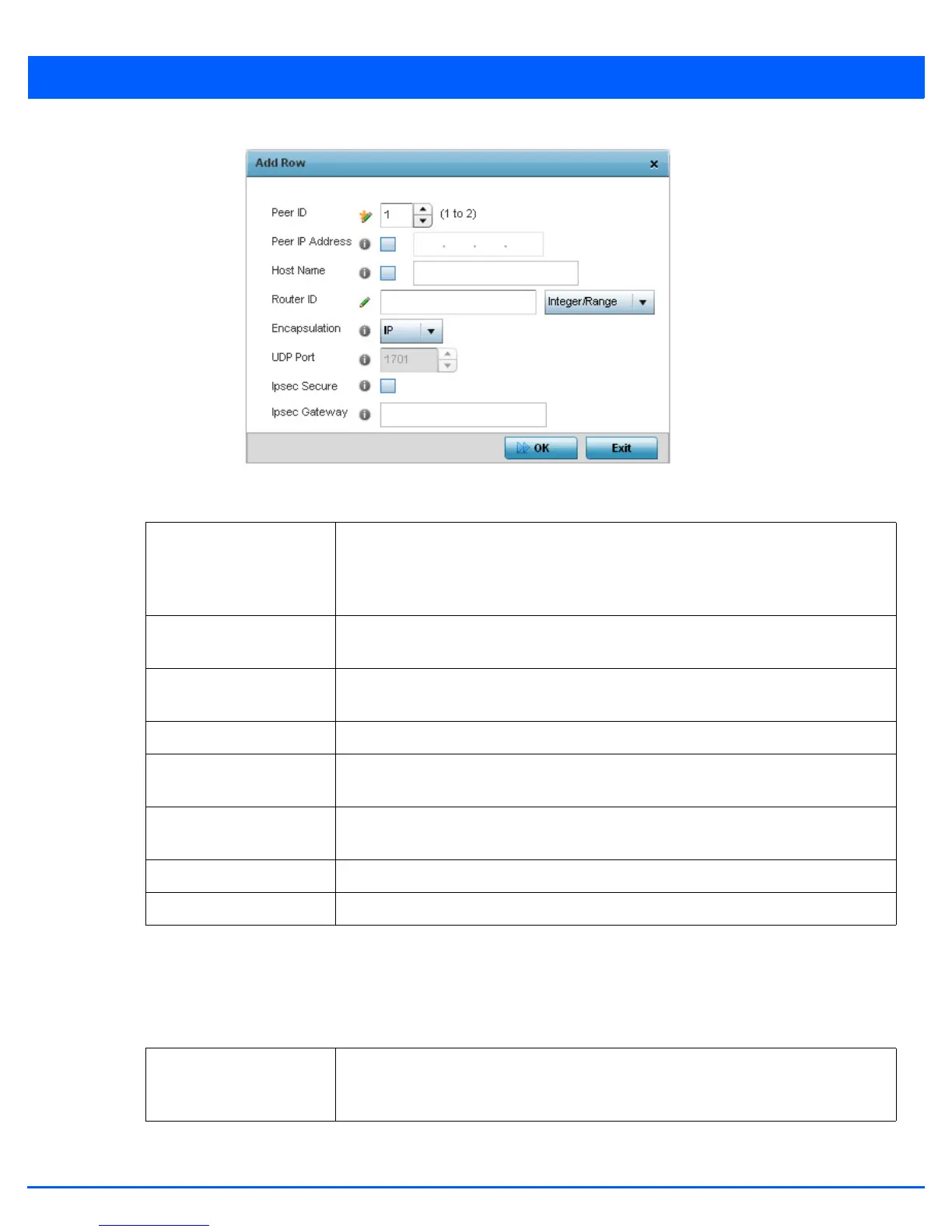5 - 66 WiNG 5.5 Access Point System Reference Guide
Figure 5-35 Network - L2TPv3 screen - Add T2TP Peer Configuration
12. Define the following Peer parameters:
13. Select OK to save the peer configuration.
14. Refer to the Session table to review the configurations of the peers available for tunnel connection.
Select + Add Row to populate the table with configurable session parameters for this tunnel configuration.
15. Define the following Session parameters:
Peer ID Define the primary peer ID used to set the primary and secondary peer for tunnel failover.
If the peer is not specified, tunnel establishment does not occur. However, if a peer tries
to establish a tunnel with this access point, it creates the tunnel if the hostname and/or
Router ID matches.
Peer IP Address Select this option to enter the numeric IP address used as the tunnel destination peer
address for tunnel establishment.
Host Name Assign the peer a hostname that can be used as matching criteria in the tunnel
establishment process.
Router ID Specify the router ID sent in tunnel establishment messages with this specific peer.
Encapsulation Select either IP or UDP as the peer encapsulation protocol. The default setting is IP. UDP
uses a simple transmission model without implicit handshakes.
UDP Port If UDP encapsulation is selected, use the spinner control to define the UDP encapsulation
port.
IPSEC Secure Select this option to provide IPSEC security for the tunnel.
IPSEC Gateway Enter the IP address/Hostname for the IPSEC gateway.
Name Enter a 31 character maximum session name. There is no idle timeout for a tunnel. A
tunnel is not usable without a session and a subsequent session name. The tunnel is
closed when the last session tunnel session is closed.

